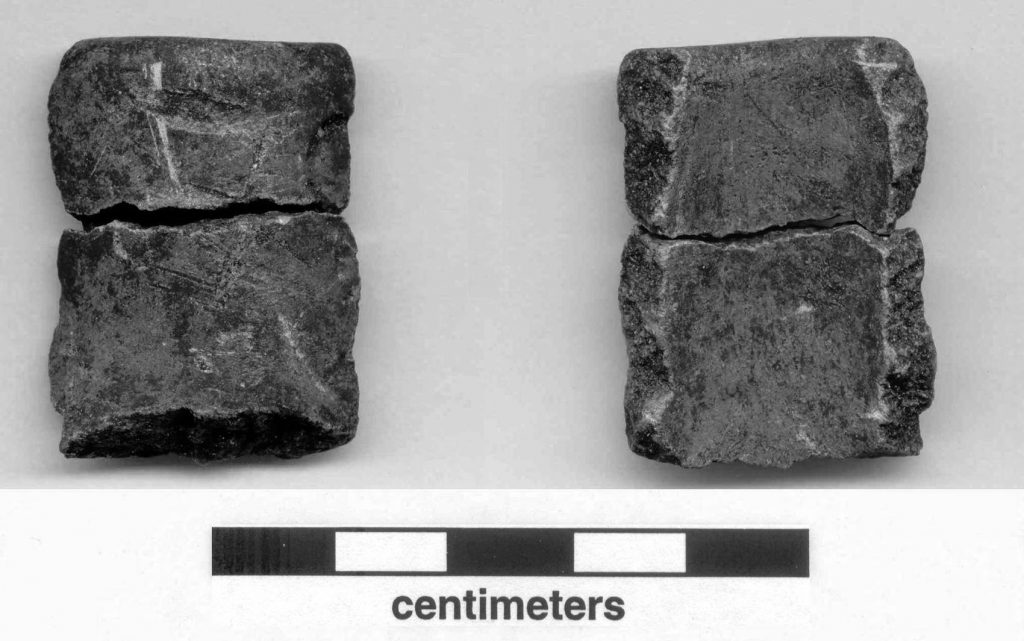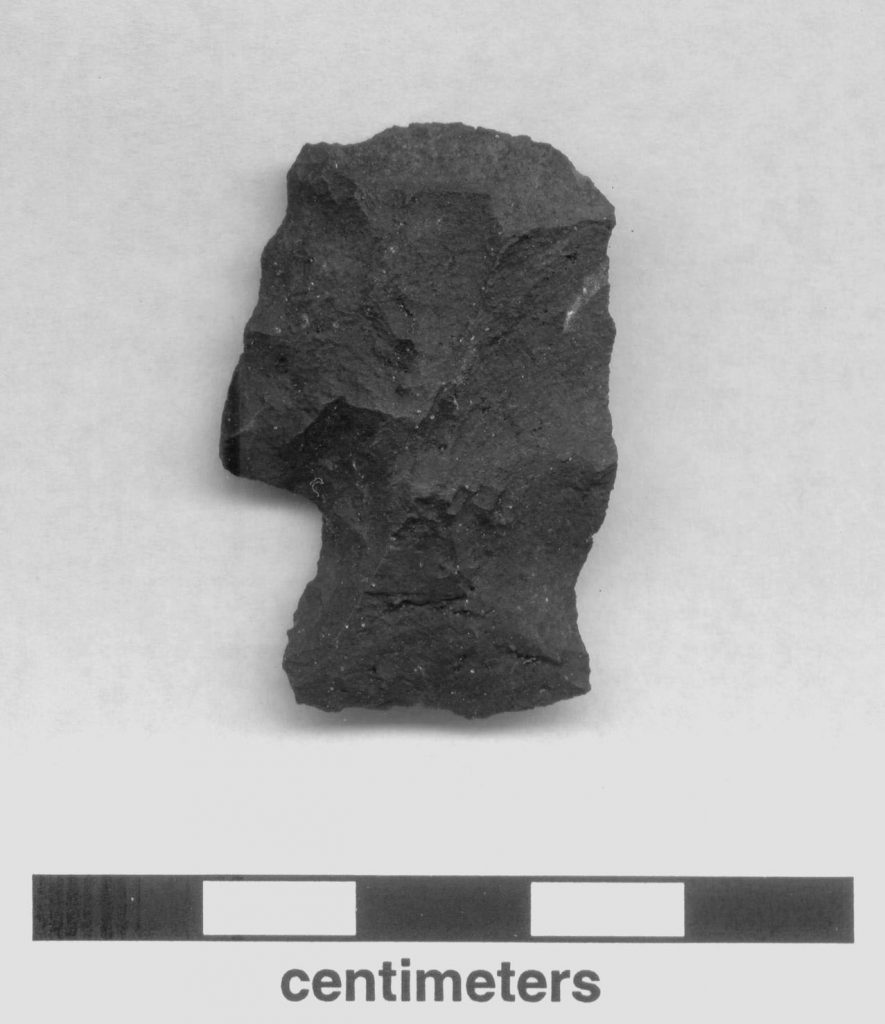Despite the fact that the Pineland site is situated well south of the natural geologic range of stone suitable for making tools and other implements, shell tools were not the only items of this sort recovered during recent field- work at Surf Clam Ridge.
During 2003-2004 excavations in Pineland’s southern pasture, several examples of stone from well outside of southwest Florida were found, indicating not just casual down-the-line trade from nearby Florida groups, but also much longer distance exchange. Flakes and tools made from chert (a flint-like rock) were found in several places, including an elongated hearth-like feature sandwiched in the middle of a shell midden dating to between ca. A.D. 500 and 600. A charred and exploded Sarasota- type spearpoint fragment was found within this hearth. It and other chert artifacts must have originated no closer than 100 miles from Pineland, because chert occurs naturally no farther south than the Hillsborough River region just north of present-day Tampa Bay.
This same hearth layer produced a hand-sized water-worn cobble of quartzite, possibly used as a hammerstone, as well as two fragments of a pipe bowl carved from steatite, or soapstone. While the quartzite cobble might have been picked up from the Florida panhandle within a riverbed that ultimately brought it from its source in the middle-Georgia Piedmont region, the steatite has a much more restricted distribution, with the nearest major quarry located near Atlanta some 500 miles away.
The later mounds at Pineland have previously produced evidence for long- distance trade in the form of chunks of galena (lead ore) traced to Missouri, but the steatite pipe from Surf Clam Ridge dates to Pineland’s pre-mound occupation, about 1500 years ago. This places it within the era of the Hopewell culture, a pan-eastern North America interaction network that was characterized by long-distance trade in exotic materials, including steatite. The possible platform pipe, carved from steatite and engraved with at least one circular design (see exterior surface, upper right quadrant), may well indicate that Pineland’s 6th-century A.D. inhabitants were on the far southern margin of a far-flung trade network that linked local societies across much of the eastern United States.
This article was taken from the Friends of the Randell Research Center Newsletter Vol 4, No. 2. December 2005.

